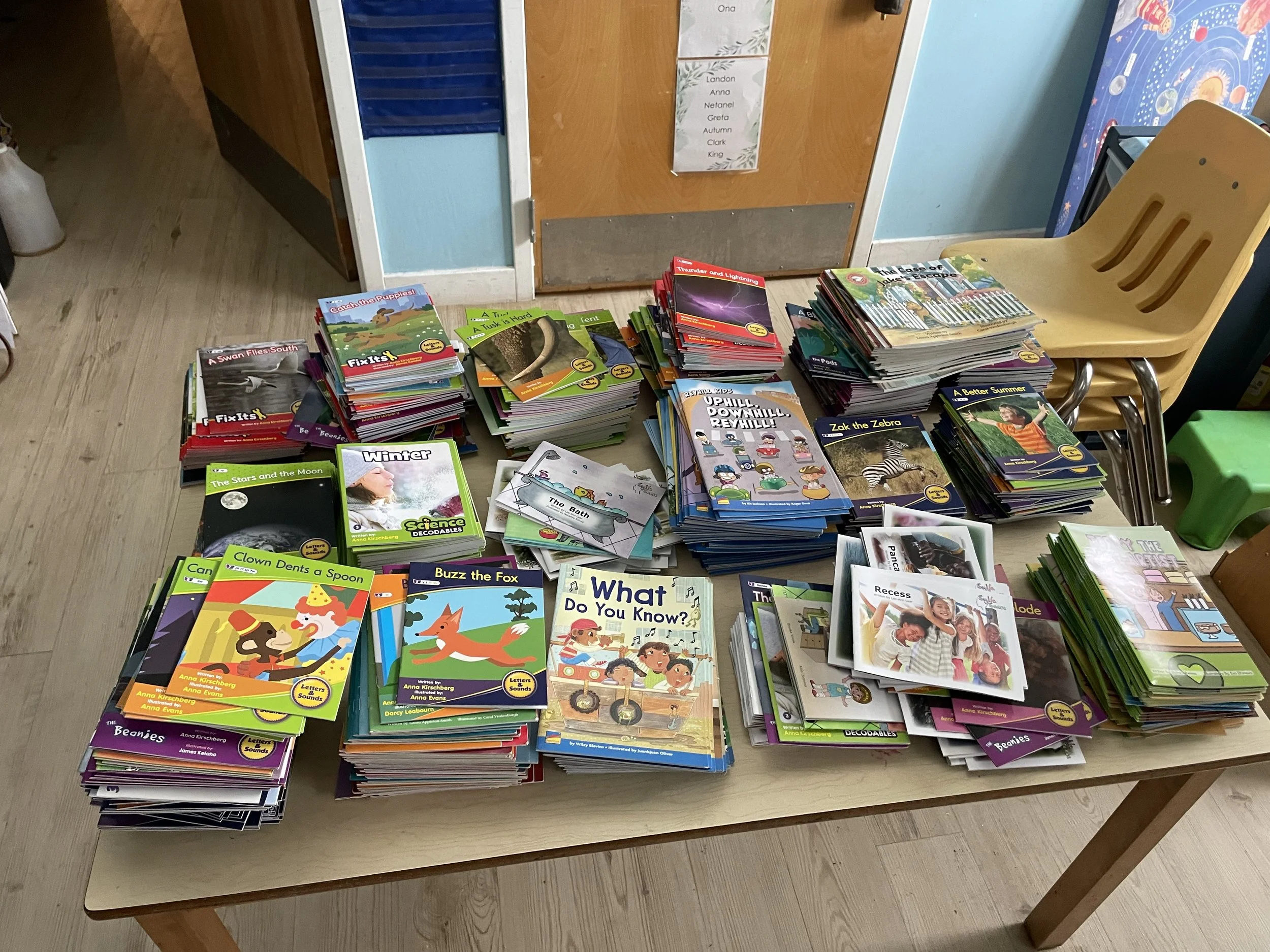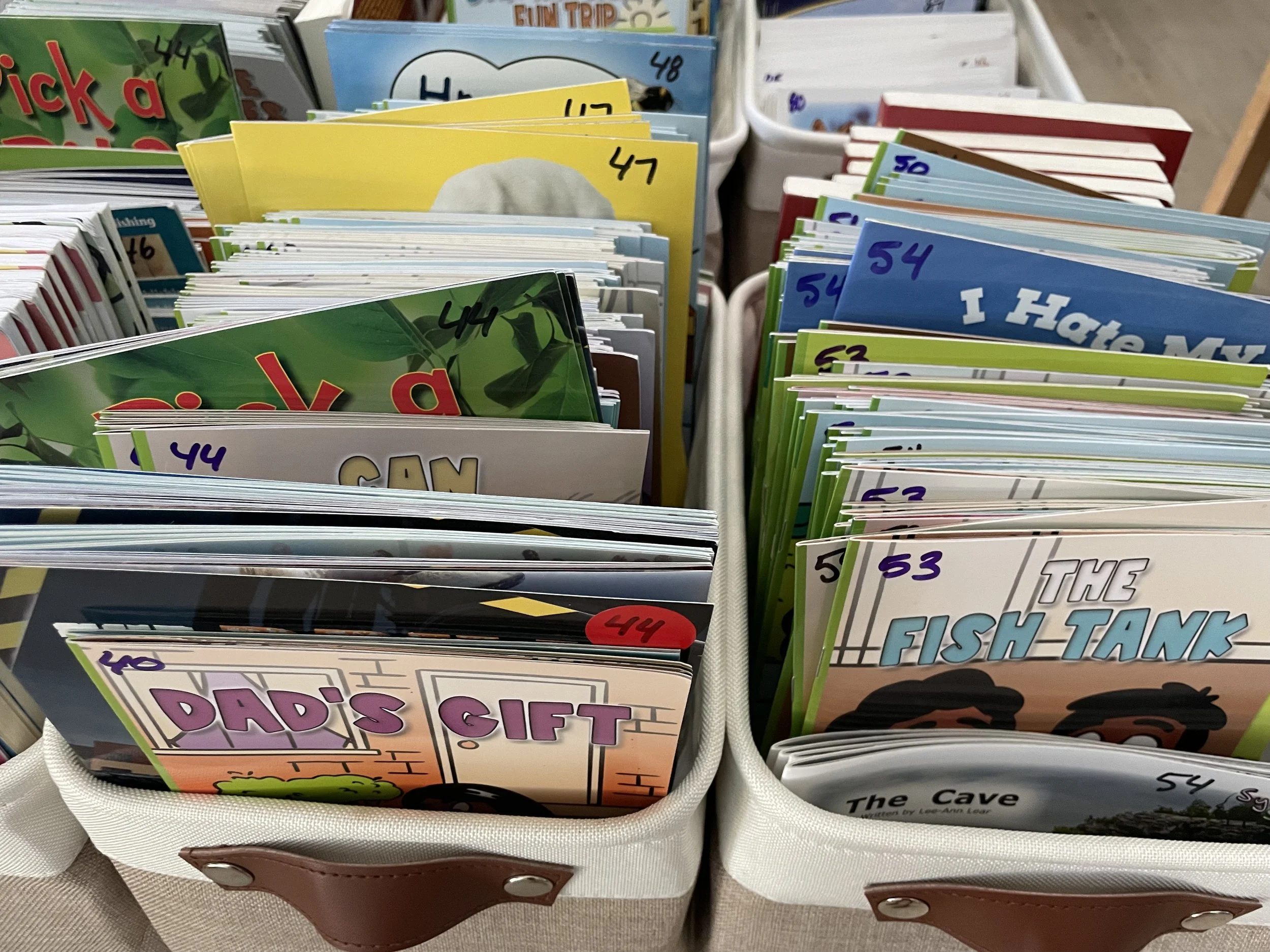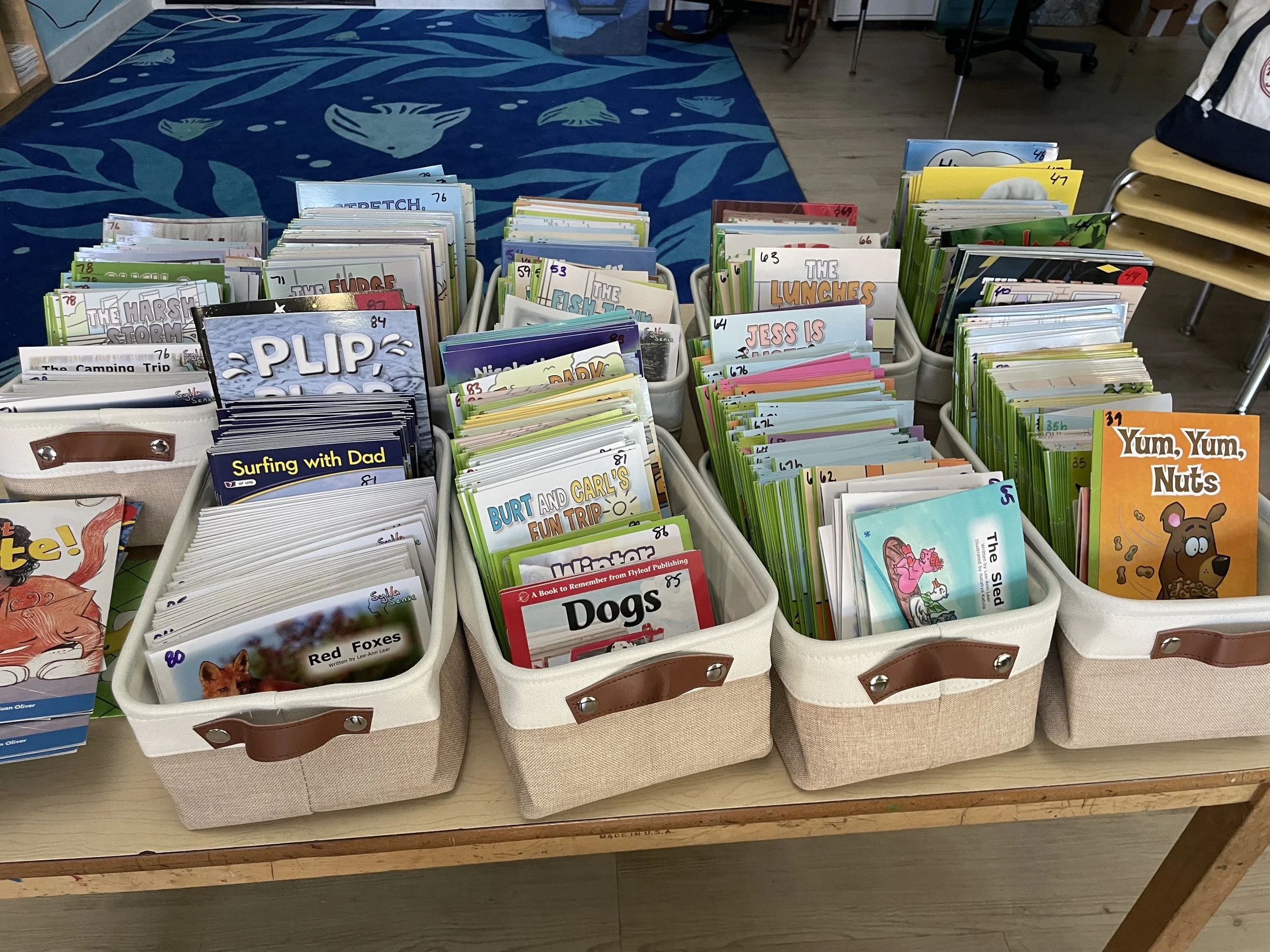How to Set Up Your Decodable Library
Whether you're a Kindergarten teacher, a high school special educator, or a middle school reading specialist, all K-12 students learning foundational literacy need access to decodable books. These texts, which are carefully matched to the foundational literacy skills they've been taught, are essential for effective reading practice and building strong, lasting literacy skills.
Watch this video to learn about the 6 types of text, including decodables, here:
Here's the problem: Every evidence-based literacy curriculum has its own unique scope and sequence, and every decodable book publisher has theirs too. This mismatch is why simply buying books isn't enough; you must align them to your instruction.
If you are teaching foundational literacy, then a decodable text library is non-negotiable. Setting up an organized one is a game-changer for effective reading instruction. Here's a 3 step guide to make it happen:
Step 1: Get Age-Aligned Decodable Books
The first step is acquiring texts that not only align with your curriculum’s foundational literacy scope and sequence, but are also relevant and engaging for your students' age group. A decodable narrative text for a first grader is not appropriate for a high schooler—even if they’re learning the same foundational literacy skill.
For me, The Reading League’s Decodable Text Guide is a fantastic one-stop resource. It maps out over 50 companies' decodable texts by age groups—from young learners to adults—making it easy to find suitable options.
Step 2: Align Books to Your Curriculum’s Scope and Sequence
This is the most critical step and requires some upfront effort - By spending a few hours upfront, you create a resource that pays dividends for years. The key is knowing exactly which foundational literacy skill (or lesson) each book is designed to practice, allowing you to instantly pull the right text for the right student, every time.
Using UFLI: If you use UFLI, you're in luck! Check out their decodable text guide that maps many decodables directly to their scope and sequence.
Other Curricula: If you use a different curriculum, you’ll probably need to match each book to the corresponding lesson or skill in your scope and sequence yourself. While this is tedious, it's well worth the time. It ensures that you're only giving students books that practice skills they've already been taught.
Pro-Tip for Organization: Once you've made the match, write the lesson number directly on the book (e.g., on the outside cover or on a small label). This instantly tells you when the book becomes "readable” for each student.
Image: Grade 1 classroom decodable texts
Step 3: Organize and Group by Lesson Number
Once every book is numbered, group your books in bins by lesson progression so they are easily accessible based. For example, you might have:
Bin 1: Lessons 1–10 Books
Bin 2: Lessons 11–20 Books
Bin 3: Lessons 21–30 Books
...and so on.
This system makes retrieval simple for both you and your students. As a student masters skills and progresses through the sequence, their accessible library automatically grows. For example, if a student is currently on lesson 42, they can access all the decodable books tagged for lessons 1 through 41. Simply tell your students which lesson number they've completed, and they can easily select their own books for independent practice.
Your New Library Awaits
Setting up a decodable library takes intentional effort, but the result is a powerful tool that transforms reading practice. By aligning every book to your curriculum's scope and sequence and organizing them by lesson number, you eliminate guesswork and empower your students to choose books they can actually read, instantly boosting their confidence and fluency.
Join the Root Literacy Design Community
We help educators implement evidence-based practices so all students learn to read and write.
Join our newsletter by filling out the simple form at the bottom of any page of our website to be the first to know about offerings, sales, and more. Together we can build a strong foundation for literacy success!
Until all of our students can read and write,
Heather Ballantine, Founder & CVO of Root Literacy Design LLC





